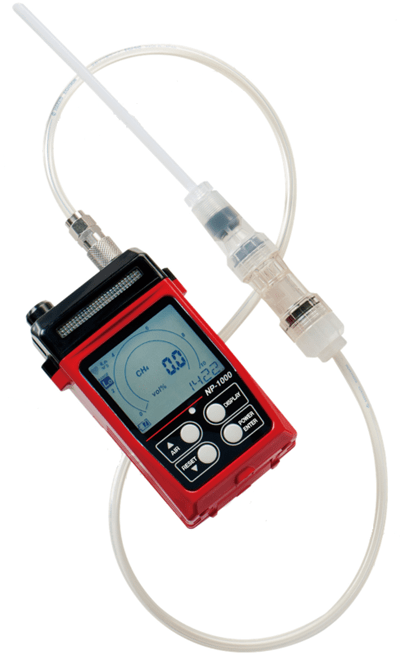Essential Gas Detectors for Safe Direct Reduced Iron (DRI) Transport: TC & PT Sensors Required
It is a requirement that all vessels carry the correct gas detection equipment onboard when carrying specific cargo; otherwise, the crew will be unable to evaluate the associated risks or hazards of the cargo carried onboard.
Furthermore, failure to adhere to these requirements may result in the vessel facing detention during a Port State Control (PSC) inspection.
The Club has noticed occasional misunderstandings regarding the suitable gas detection equipment needed for the transportation of Direct Reduced Iron (DRI) types A (Hot Briquetted Iron (HBI)), B, and C. In these cases, the ship's crew mistakenly believe that gas detectors using catalytic or infrared principles would be adequate for the necessary monitoring task.
The International Maritime Solid Bulk Cargoes (IMSBC) Code's DRI schedules specify that one of the hazards associated with these cargoes is their potential to gradually release hydrogen upon contact with water, especially saline water. Hydrogen is a combustible gas that can create an explosive mixture when its concentration in the air exceeds 4% by volume and reduces oxygen levels within cargo spaces.
To accurately oversee the cargo, compliance with the IMSBC code mandates the presence of an appropriate detector on board when transporting this cargo for quantitative hydrogen measurements. This detector must be capable of functioning effectively in an environment with reduced oxygen levels and should be certified as safe for operation within an explosive atmosphere.

As the IMSBC Code does not specifically prescribe the type of gas monitoring equipment to be utilised, there is a prevailing assumption that catalytic and infrared gas detectors are suitable for the detection of hydrogen. However, it is crucial to clarify that this assumption is not accurate. It is essential to note the following:
Catalytic Detector: Catalytic gas detectors may fail to detect hydrogen (H) accurately when the oxygen (O2) level drops to 10% or lower. This is because the readings produced by the catalytic sensor for flammable gases may become unreliable in such conditions. Moreover, there is a risk of false readings indicating the presence of flammable gases.
Infrared Detector: While infrared gas detectors can continue to function when the oxygen (O2) level falls below 10%, it is important to understand that they cannot detect hydrogen. This limitation arises from the fact that diatomic molecules like hydrogen do not absorb infrared radiation, making them undetectable by infrared sensors.
Hence, being well-informed about the specific gas detection monitoring equipment needed when transporting such cargo is imperative. According to "The Hot Briquetted Iron (HBI): A Guide to Shipping, Handling & Storage", the approved hydrogen sensors which meet the criteria are Thermal Conductivity (TC) and Palladium Thin Film (PT) sensors.
Moreover, it is essential to avoid the use of catalytic bead combustible gas and infrared sensors for hydrogen monitoring. Before commencing the loading process, it is advisable to ensure the presence of at least two (ideally three) gas monitors equipped with the approved gas sensor types on the vessel.

Palladium Thin Film (PT) gas detectors work on the principle of hydrogen diffusion through a thin palladium film. When hydrogen molecules encounter the palladium film, they undergo a chemical reaction, leading to a change in electrical resistance. This change is then detected and used to signal the presence of hydrogen. Palladium thin film sensors are known for their high sensitivity and reliability in detecting even trace amounts of hydrogen.
Considering the restrictions in the detection of hydrogen with the catalytic and infrared gas detectors, it is imperative that when a vessel is carrying DRI cargo, at least two gas detectors fitted with either TCD or PT sensors are carried onboard.
Members requiring further guidance should contact the Loss Prevention Department.